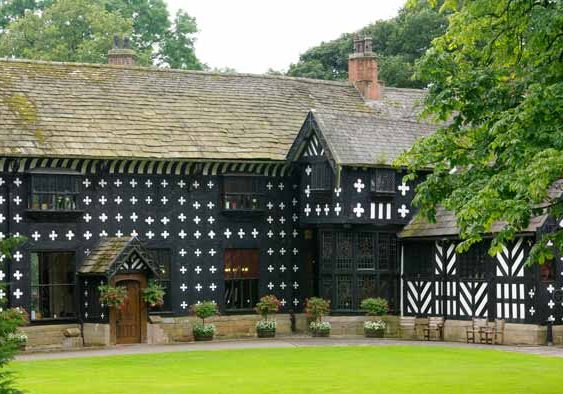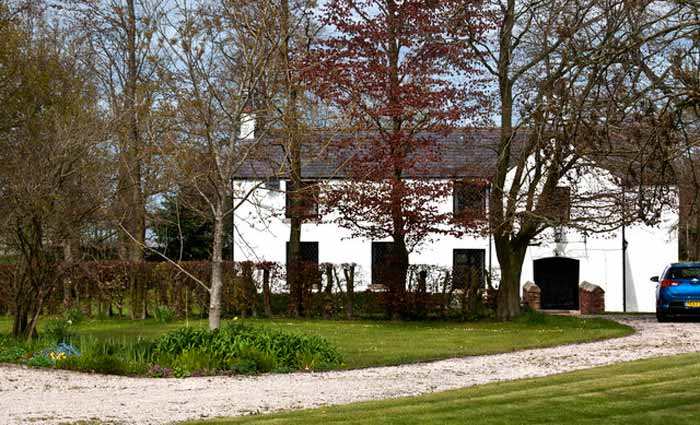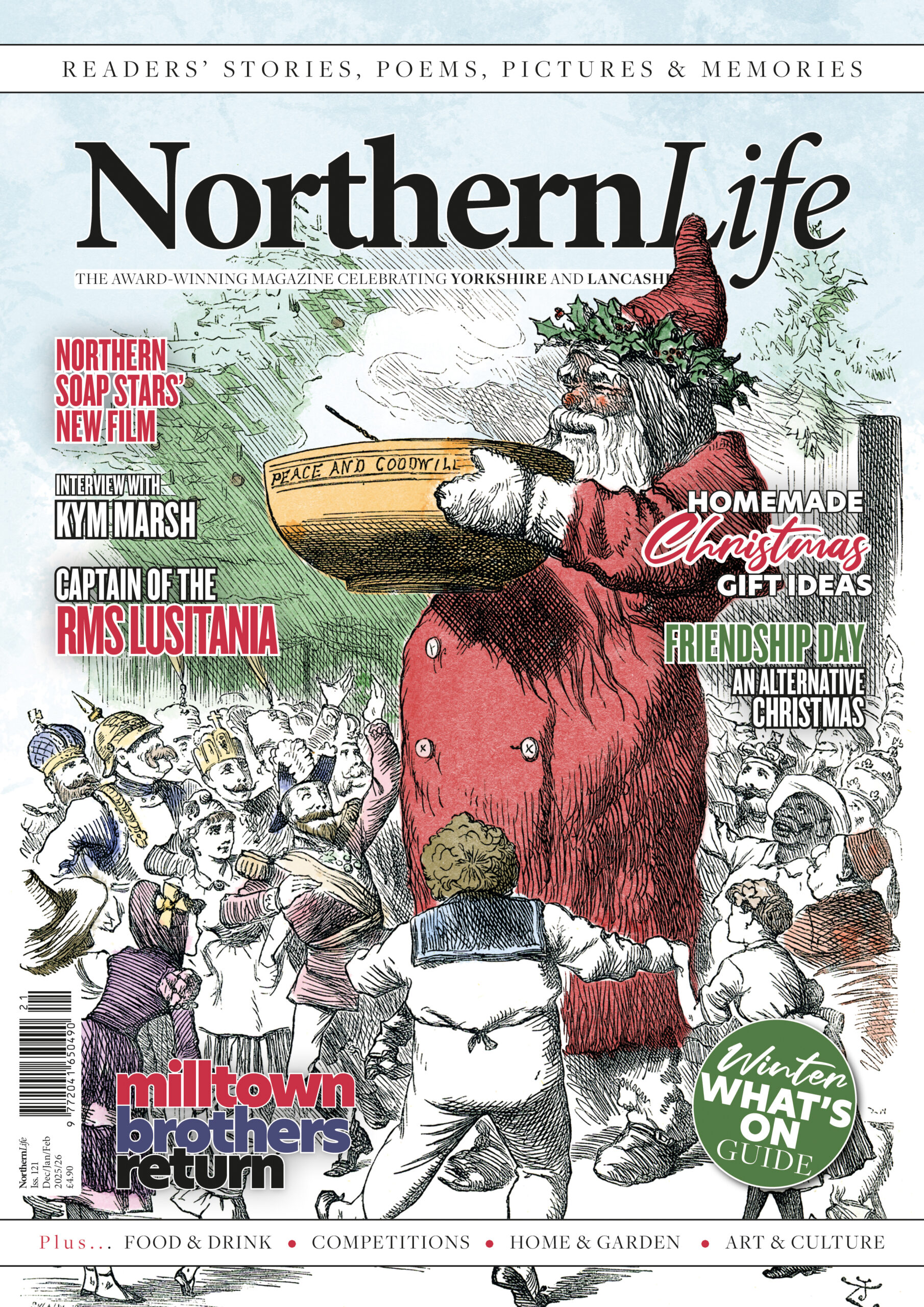
8 haunted places in Lancashire
by Northern Life
Samelsbury Hall
Samlesbury Hall is renowned as one of the most haunted places in Lancashire, it is said to be haunted by the ghost of Lady Dorothy Southworth, known as the White Lady. Lady Dorothy, from a Catholic family, fell in love with a young man from the de Hoghton family, who were Protestants. Against the will of both families, the couple continued to see each despite their families’ feelings. Lady Dorothy’s family heard that the couple were planning to elope and marry.
On the night of their planned elopement, Lady Dorothy’s brother lay in wait for the couple. When the young de Hoghton man arrived the Lady’s brother killed him along with his two companions. Lady Dorothy witnessed the whole event and was so distraught that she had to be sent to an overseas convent.
Lady Dorothy Southworth died of a broken heart. Her spirit has reportedly been seen floating down the many corridors of the halls, crying for the love she lost.

Samlesbury Hall
Pendle Hill
Pendle Hill is famed for its history of witches. In the 17th century twelve accused witches who lived in the area were subjected to what is known as the Lancashire witch trials. Of the accused twelve, one died during the trial, ten were found guilty and hanged, and one was found not guilty. The history of the witch trails has left a sinister atmosphere in the area.
It is said that the Pendle Hill witches still haunt the area and the buildings in it. Visitors often describe feeling anger when visiting the hill and local people even fear discussing the events that took place during the witch trials.
Amongst other TV shows Pendle Hill has featured on Most Haunted. The show’s presenter, Yvette Fielding, said it was the scariest episode they had made.
Golden Lion pub, Lancaster
There has been a pub on the site of the Golden Lion since the 15th century. It was used as the final drinking place for the condemned who would then be taken out to the gallows on the moors, including – legend has it – the Lancashire witches.
The Golden Lion as it stands is said to be haunted by a nun who escorted the condemned to the gallows in the 16th Century and who can be seen wandering the cellars.
Wycoller Hall, near Colne
The small hamlet of Wycoller can trace its roots beyond 1000BC when it was an agricultural settlement. Now a ruin, Wycoller Hall sits in the centre of Wycoller. It was built by the Hartley family at the end of the 16th century.
Once a year, in mid-winter, it’s reported a former resident (usually identified as Simon Cunliffe) is seen riding around the area, blowing his horn. Legend has it that Cunliffe was fox hunting when the fox ran into the hall and up the stairs followed by the mounted Cunliffe and his pack of hounds. His wife was terrified and started to scream and protest. Seeing his wife acting in, what he considered a cowardly fashion, angered Cunliffe and he raised his riding crop in preparation to strike her. This was the final straw and his wife suddenly died of fright.
Swan Hotel, Whalley
The Swan Hotel, built in 1781, is haunted by the desperate apparition of Mary Lane.
Mary was employed at the hotel as a scullery maid and fell pregnant to an unknown guest. The landlord didn’t think she was fit to be a mother (because she suffered from learning difficulties), a told her that once she had given birth the baby would be given up for adoption.
Mary gave birth to a perfectly healthy baby girl and the landlord kept his promise – the baby was adopted. As a result Mary became desperately depressed and she killed herself in her workplace. Her ghost has been seen there many times since, including by a visiting medium in 1967 and visitors to Whalley’s popular Pickwick Night celebrations.
Chingle Hall, Goosnargh
Originally called Singleton Hall, Chingle Hall was built in 1260 by the knight Adam de Singleton. Relatives of the Singletons, the Wall Family moved into the hall in the late 16th century. John Wall who was born in 1620 began using the hall as a place of worship for Catholics at a time when it was illegal to practice mass. The hall had many priest holes and secret compartments were made for the people taking part the mass to hide if the hall was raided by the kings soldiers. At this time Father John Wall was most active, conducting secret mass on a regular basis. John Wall was executed in 1679 for conducting secret mass and legend has it that his head was buried in the grounds.
Visitors and investigators have reported noises, apparitions and objects being moved in the hall. During the 1950s one of the beams spontaneously caught fire, and, just as quickly as it had started, it inexplicably extinguished itself. The smell of wood burning lingers in many of the rooms. Chingle Hall is considered by many to be the most haunted building in England.

Chingle Hall
Blackpool Pleasure Beach
There are numerous reports of ghostly goings on at Blackpool Pleasure Beach but none more famous than Cloggy, so called because it is the apparition of a train operator who used to wear clogs. Both staff at the park and visitors have reported hearing the spooky footsteps of Cloggy walking around the ghost train.
The ice rink is also frequented by a mysterious haunting. A phantom skater is often heard, well after the venue has closed for the night. Also, staff working at night have reported feeling an awful presence hovering over them as they work.
Winter Gardens, Morecambe
The Morecambe Winter Gardens dates back to 1897. It is said that the stage in the main auditorium is haunted by the force which has been reported to push, slap, poke and generally harass people on one side of the stage. There are many other ghosts throughout the building including the apparition of a seamstress who failed to reach the fame she desired as a professional dancer, she is said to haunt one of the dressing rooms in the auditorium.
Investigators of the paranormal who have visited the building have reported that they successfully recorded several EVPs or electronic voice phenomena.


